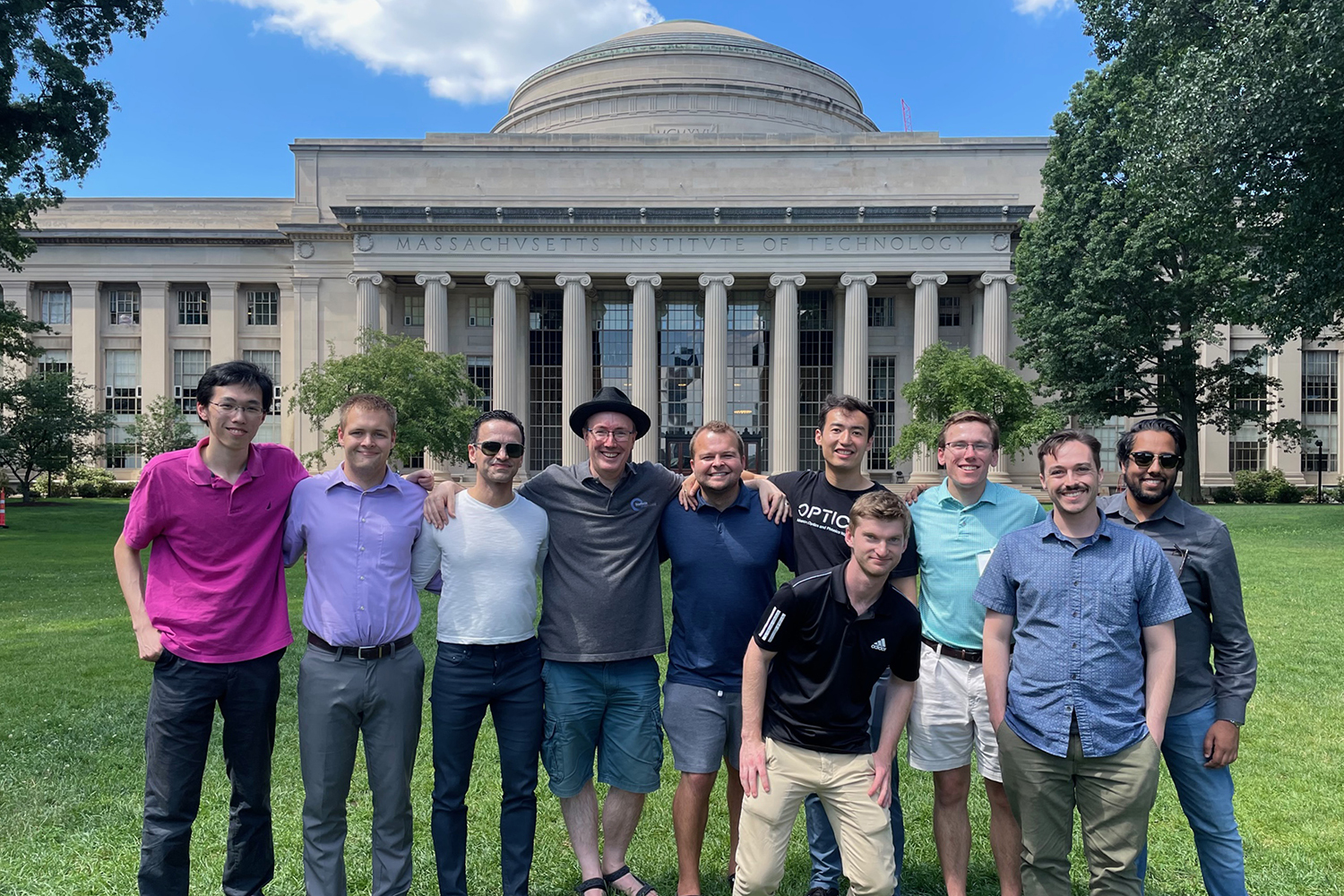
Photonics community gathers to further develop open-source software for electromagnetic simulations spanning a broad range of applications.
Sandi Miller | Department of Mathematics
Meep is not just the sound made by the Road Runner and Beaker the Muppet. Meep is a software package that MIT physicists originally developed in the early 2000s as a custom code written in C++ to facilitate the academic research of photonic crystals. It was released as open source in 2006. After nearly two decades of continuous development and growth, involving contributions from more than 40 developers, Meep is now widely used in the photonics community to research nano-optics and other electromagnetic systems.
To bring Meep users together, the inaugural MeepCon user and developer conference was held virtually and in person at MIT from July 27 to 29. Participants from all over the world participated in tutorials, technical talks, and a hackathon to develop applications and further advances in electromagnetic modeling.
“It has been wonderful to see how Meep has grown to become such an important free resource for electromagnetic modeling and design, but we’ve only interacted with most Meep users via online forums, if at all,” says MeepCon’s co-organizer, MIT Professor Steven Johnson. “Hosting MeepCon was an amazing opportunity to have live (in-person and remote) interactions with people putting our software to exciting uses all around the world, and it was great to see both the innovative research in the technical talks and the Q&A in the tutorials. I’m excited to continue this tradition in future years.”
Johnson, an applied math and physics professor who works in the field of nanophotonics, works on many aspects of the theory, design, and computational modeling of nanophotonic devices, both classical and quantum.
Other MeepCon organizers were Google’s Ardavan Oskooi SM ’08, ScD ’10, and Alec Hammond of Georgia Tech. Oskooi and Johnson maintain the Meep repository on GitHub. Professor Stephen Ralph of Georgia Tech, who is collaborating with Johnson on using Meep for inverse design and topology optimization of silicon photonics, also brought a team of students to join the conference and get involved with the development of new Meep features.
Meep, an acronym for MIT Electromagnetic Equation Propagation, is an open-source software package for electromagnetic simulation by the finite-difference time domain method, spanning a broad range of physical materials and applications. It is used in both teaching and research at MIT and other institutions.
Thanks to Meep, researchers have been able to develop advances in optical and radio technologies such as solar power, ultrathin lenses, wireless power, and radar. Such electromagnetic modeling uses computer simulations to unravel the interaction of electromagnetic fields with physical objects and the environment to calculate the performance of everything from nanoscale lasers to radio antennas, and to reveal the intricate mathematical phenomena that arise as light travels through complicated structures.
Fourth-year mathematics graduate student Mo Chen calls Meep “an indispensable tool” to study, analyze, and design photonic structures. He is a member of Johnson’s Nanostructures and Computation Group, which also counts Oskooi as an alumnus.
“MeepCon was such an incredible experience,” says Chen, who ran a tutorial demonstrating the use of Meep’s adjoint solver for the inverse design of a metasurface lens. “It was my great pleasure to meet other people in the community through MeepCon, and I look forward to potential collaborations with them in the future.”
